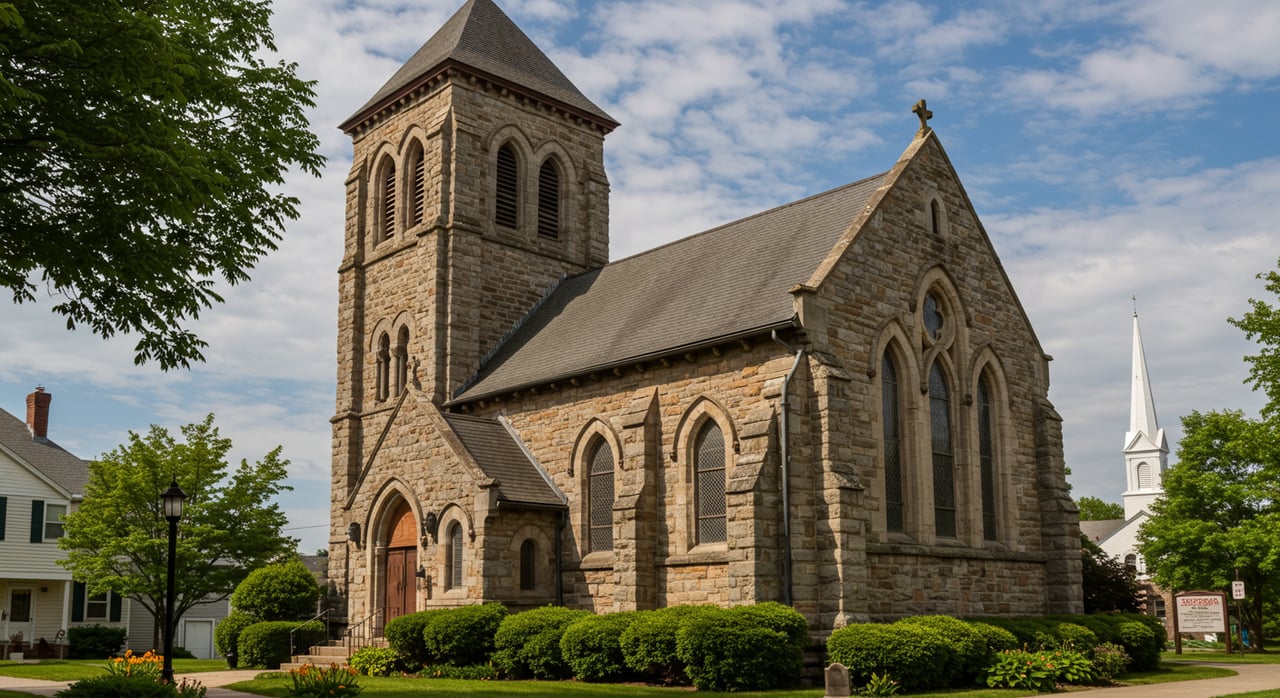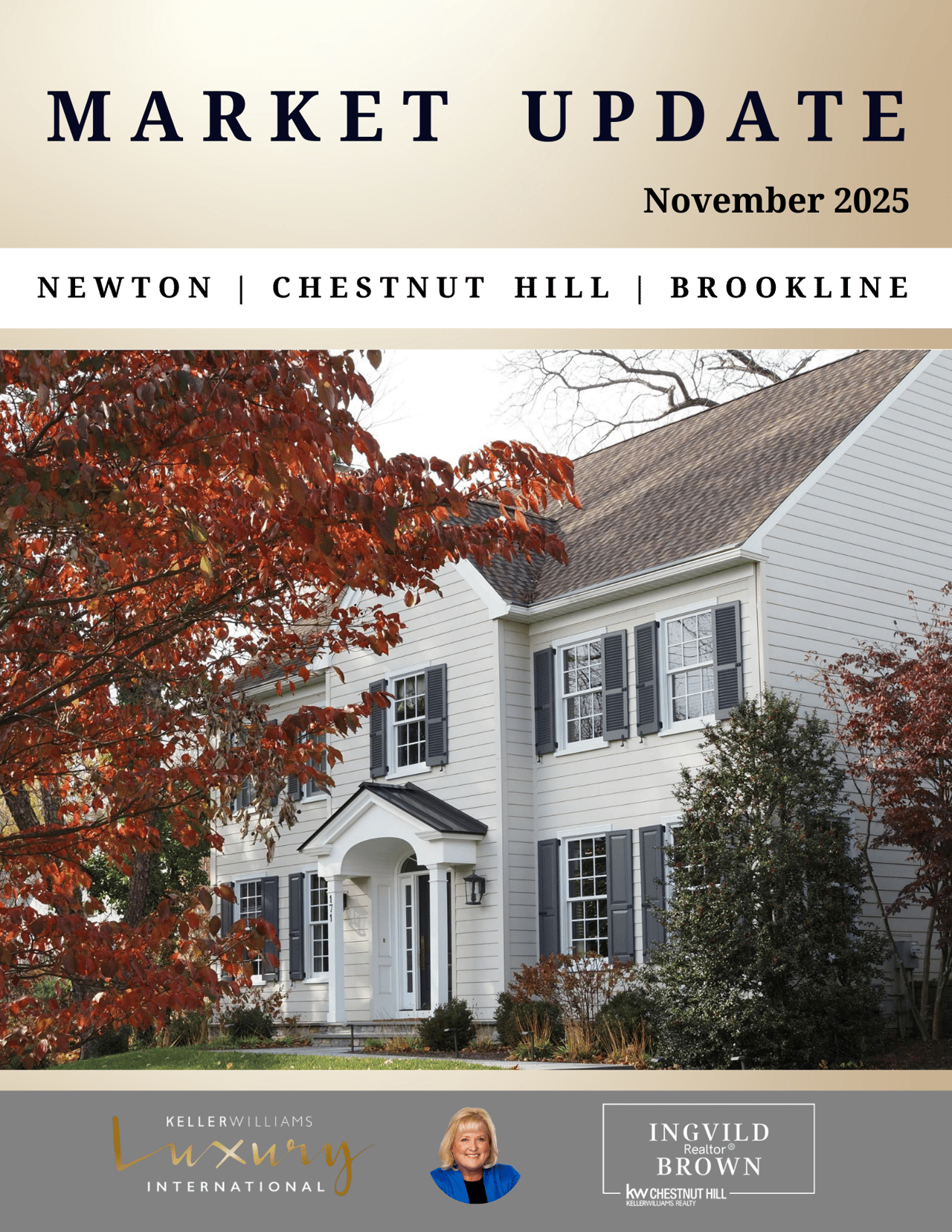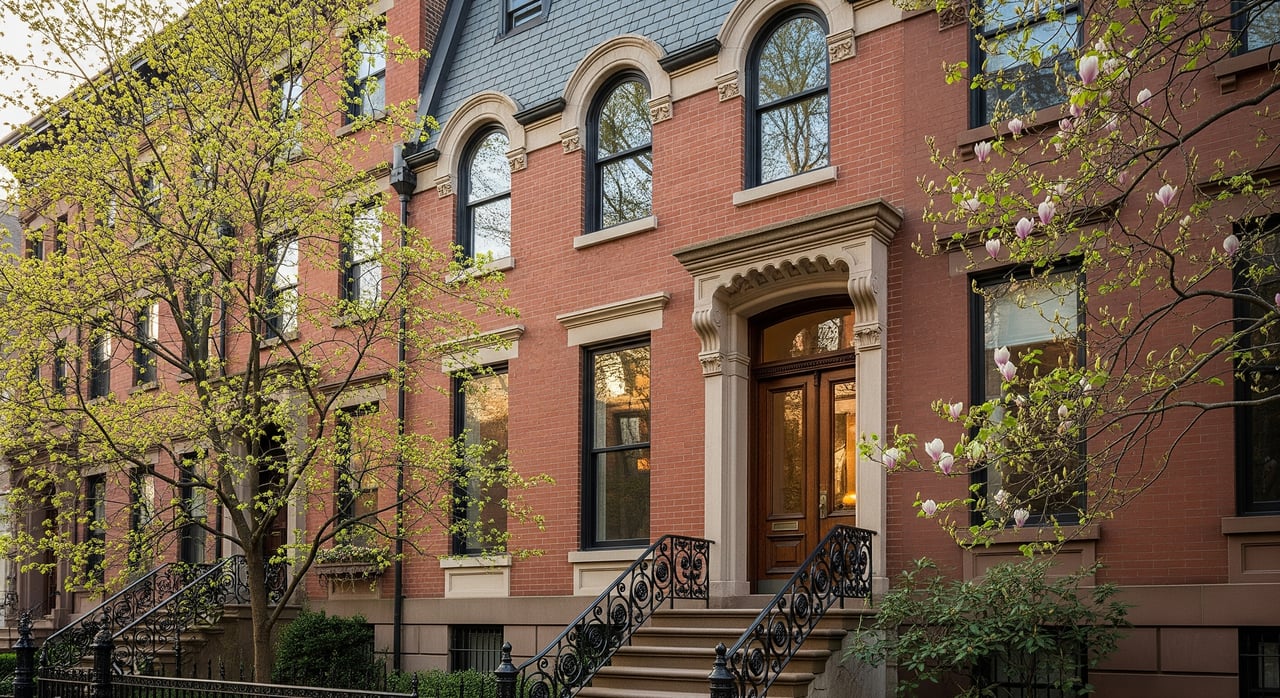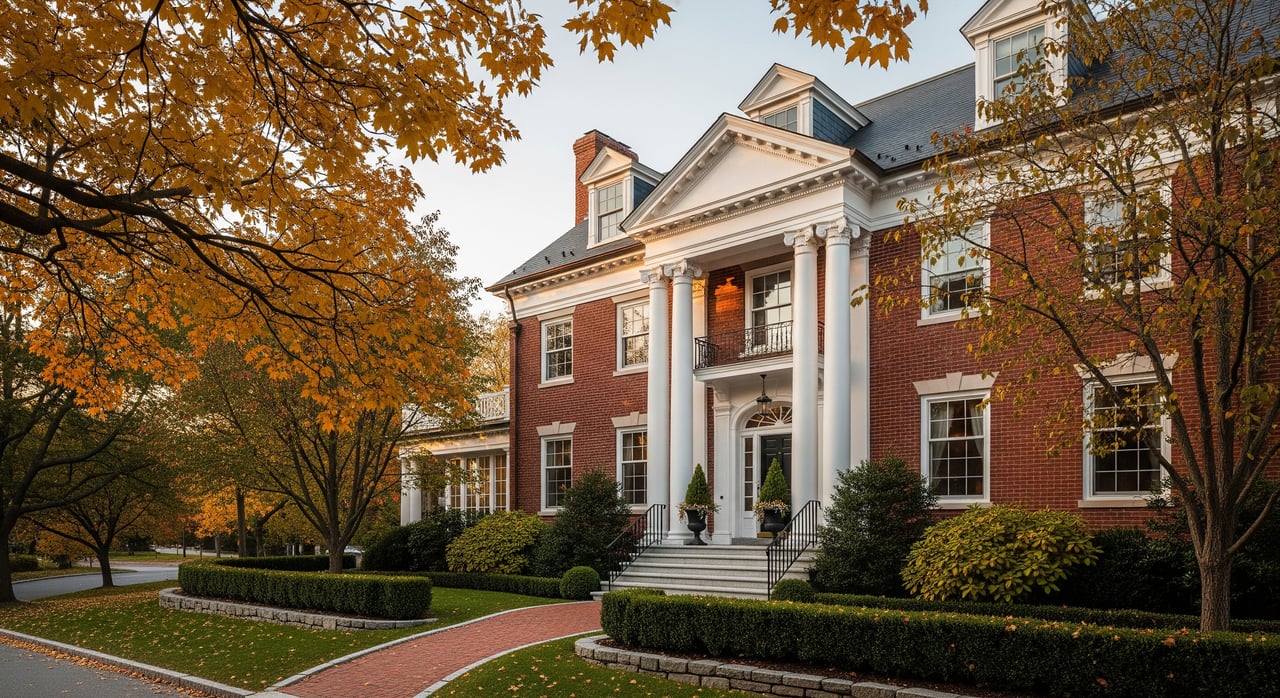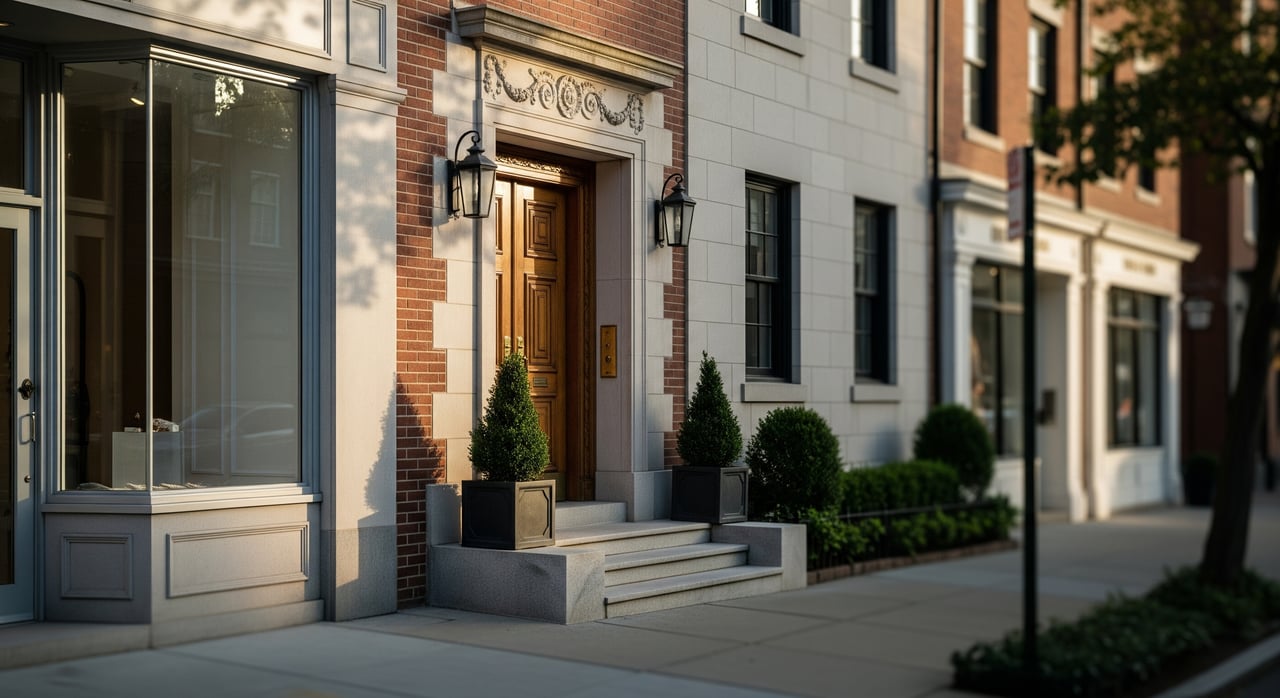Seven miles west of Boston, Newton, Massachusetts, is one of the region's most affluent and sought-after places to live. Comprising 13 distinctive villages, including Chestnut Hill, the home of Boston College, Newton is steeped in history. A drive down any street in any neighborhood is a captivating experience, revealing a landscape spanning nearly four centuries of colonial and American architectural styles.
The journey showcases buildings and homes that recount the area's rich history and document the brilliance of various architectural styles that have evolved since the early 1600s. From its earliest settlements in the 17th century to the modernist movements and forward-looking schools of design of the 20th century, Newton's architecture includes many structures that speak volumes of its aesthetic and cultural heritage.
Oldest Homes in Newton
Various locations | built 1645 to 1724 | First Period, Colonial, Georgian
What better way to begin a trip through Newton's architectural landmarks than with the city's oldest homes? Homes like the Hammond House and those on Fairlee Road, Suffolk Road, and Cherry Street represent the foundational layers of Newton's architectural heritage. These structures, spanning from the 17th to the early 18th centuries, are pillars of American history, embodying the early settlers' dreams, challenges, and lives. The five oldest homes in Newton include:
What better way to begin a trip through Newton's architectural landmarks than with the city's oldest homes? Homes like the Hammond House and those on Fairlee Road, Suffolk Road, and Cherry Street represent the foundational layers of Newton's architectural heritage. These structures, spanning from the 17th to the early 18th centuries, are pillars of American history, embodying the early settlers' dreams, challenges, and lives. The five oldest homes in Newton include:
- Hammond House | Chestnut Hill | built (estimated) 1645 | First Period
- John Woodward House | Waban | 1686 | Colonial
- Kingsbury House | Chestnut Hill | 1700 | First Period
- Dr. Samuel Warren House | West Newton | 1716 | Georgian
- Murdock-Wiswall House | 1718 | Oak Hill | Georgian
First Baptist Church
Newton Centre | built 1888 | Richardsonian Romanesque
The First Baptist Church is a stunning example of the Richardsonian Romanesque style. This design has left a significant mark on the Boston area thanks to Henry Hobson Richardson, a pioneer in American architecture. Designed by John Lyman Faxon, this church showcases the unmistakable characteristics of the style: robust, detailed stonework, a grand yet inviting presence, and exquisite detailing, including brownstone trim and a unique octagonal tower adorned with winged creatures. Completed in 1888, the architecturally rich building provided the congregation with a genuine home in Newton nearly 100 years after its founding.
The First Baptist Church is a stunning example of the Richardsonian Romanesque style. This design has left a significant mark on the Boston area thanks to Henry Hobson Richardson, a pioneer in American architecture. Designed by John Lyman Faxon, this church showcases the unmistakable characteristics of the style: robust, detailed stonework, a grand yet inviting presence, and exquisite detailing, including brownstone trim and a unique octagonal tower adorned with winged creatures. Completed in 1888, the architecturally rich building provided the congregation with a genuine home in Newton nearly 100 years after its founding.
The Jackson Homestead
Newton Corner | 1809 | Federal Style
Originally the centerpiece of a 500-acre farm, the mansion in Newton Corner is among a handful of Federal-style homes remaining in Newton. Construction on the home finished in 1809. The home is also one of the region's most historic buildings, serving as a vital station on the pre-Civil War Underground Railroad. Typical for its day, the home was built as a two-family residence and retained a portion of an earlier home built in the 1670s, making part of the structure among the oldest construction still standing in Newton. Today, the home is a City of Newton museum, showcasing some of the history it once supported as it happened.
Originally the centerpiece of a 500-acre farm, the mansion in Newton Corner is among a handful of Federal-style homes remaining in Newton. Construction on the home finished in 1809. The home is also one of the region's most historic buildings, serving as a vital station on the pre-Civil War Underground Railroad. Typical for its day, the home was built as a two-family residence and retained a portion of an earlier home built in the 1670s, making part of the structure among the oldest construction still standing in Newton. Today, the home is a City of Newton museum, showcasing some of the history it once supported as it happened.
Mary Immaculate of Lourdes Catholic Church & Rectory
Newton Upper Falls | 1909 / 1938 | Renaissance Revival / Georgian Revival
Reflecting the century-spanning leaps in architectural design that can occur within one relatively small area, the Mary Immaculate of Lourdes Catholic Church is a monumental structure in Upper Falls Newton that exemplifies the Renaissance Revival style. Including a foreboding two-and-a-half-story Corinthian portico, bas-relief of Mary Magdalene, and Italian Renaissance bell tower, the church is among the most lavish, architecturally engaging structures in the Boston Metropolitan area. The parish grounds include a circa 1938 Georgian/Colonial Revival rectory building featuring a distinctive gambrel roof.
Reflecting the century-spanning leaps in architectural design that can occur within one relatively small area, the Mary Immaculate of Lourdes Catholic Church is a monumental structure in Upper Falls Newton that exemplifies the Renaissance Revival style. Including a foreboding two-and-a-half-story Corinthian portico, bas-relief of Mary Magdalene, and Italian Renaissance bell tower, the church is among the most lavish, architecturally engaging structures in the Boston Metropolitan area. The parish grounds include a circa 1938 Georgian/Colonial Revival rectory building featuring a distinctive gambrel roof.
Newton Railroad Stations Historic District, Echo Bridge, & Sudbury Aqueduct
Newton | from 1876 to 1891 | Richardsonian Romanesque (railroad stations)
By no means limited to private residences or area churches, Newton's architectural legacy extends to several local public buildings and structures. First, Newton's Railroad Stations Historic District features four structures—three railroad stations and a baggage building- a legacy of the aforementioned H.H. Richardson and his architectural heirs Shepley, Rutan, and Coolidge. These structures, constructed from 1886 to 1891, with their unique variations of Richardsonian Romanesque and historical importance, highlight the role of transportation in shaping the city's development.
By no means limited to private residences or area churches, Newton's architectural legacy extends to several local public buildings and structures. First, Newton's Railroad Stations Historic District features four structures—three railroad stations and a baggage building- a legacy of the aforementioned H.H. Richardson and his architectural heirs Shepley, Rutan, and Coolidge. These structures, constructed from 1886 to 1891, with their unique variations of Richardsonian Romanesque and historical importance, highlight the role of transportation in shaping the city's development.
Similarly, Echo Bridge, a masonry aqueduct and pedestrian bridge that crosses the Charles River in the Hemlock Gorge Reservation in Newton Upper Falls, and the larger Sudbury Aqueduct, which runs for 16 miles between Farm Pond in Framingham and the Chestnut Hill Reservoir, reflect architectural achievements that also fulfill vital civic needs. Built in 1876 and 1878, respectively, the fact both structures remain in service (the aqueduct in an emergency backup roll) is a testament to their original planning and design.
Waban Avenue Queen Anne
Waben | 1895 | Queen Anne
Though Newton's residential architecture includes a spectrum of styles from Federal to Colonial, from Tudor to Contemporary, the 6,500 square foot Queen Anne home at 236 Waban Avenue is a textbook example of how modern buyers can adequately maintain the core of a home's aesthetic value while meeting 21st century needs. Completed as a spec home in 1895, today, the private residence boasts a multitude of modern amenities while still maintaining its Victorian-era charm and grace. For any homebuyer interested in purchasing one of Newton's many historic homes, this home on Waban Avenue offers a blueprint worth following.
Though Newton's residential architecture includes a spectrum of styles from Federal to Colonial, from Tudor to Contemporary, the 6,500 square foot Queen Anne home at 236 Waban Avenue is a textbook example of how modern buyers can adequately maintain the core of a home's aesthetic value while meeting 21st century needs. Completed as a spec home in 1895, today, the private residence boasts a multitude of modern amenities while still maintaining its Victorian-era charm and grace. For any homebuyer interested in purchasing one of Newton's many historic homes, this home on Waban Avenue offers a blueprint worth following.
George Kaplan House & Baldpate Hill Road House
Oak Hill | 1946 & 1959 | Bauhaus-International, Mid-Century Modern
Finally, while a home tour in Newton is often an inventory of a past that extends back several centuries, it's worth noting the homes and structures that may one day earn antiquity status once they cross the century-old threshold. Two potential candidates include the George Kaplan House and the Baldpate Road House, located a few minutes apart in Oak Hill. The circa 1946 Kaplan house is an exquisite example of the Bauhaus-International Style, with minimalist aesthetics, geometric forms, and functional design principles characteristic of the movement.
Finally, while a home tour in Newton is often an inventory of a past that extends back several centuries, it's worth noting the homes and structures that may one day earn antiquity status once they cross the century-old threshold. Two potential candidates include the George Kaplan House and the Baldpate Road House, located a few minutes apart in Oak Hill. The circa 1946 Kaplan house is an exquisite example of the Bauhaus-International Style, with minimalist aesthetics, geometric forms, and functional design principles characteristic of the movement.
Representing the post-WWII architectural boom, the Baldpate Hill Road House is a remarkable example of a mid-century modern design, more reminiscent of Palm Springs than suburban Boston. A creation of Henry B. Hoover, a purveyor of the modern style throughout New England, the home integrates with the natural terrain. It includes an enclosed Japanese garden, an abundance of warm, natural woods, and large picture windows.
Discover more with trusted real estate partner
If you're interested in discovering more about Newton, including finding an architectural landmark of your own, contact Ingvild Brown today to start your real estate journey. Allow Ingvild's experience and expertise to help you navigate Newton's historic residential landscape and uncover your ideal luxury home.
*Header photo courtesy of Tim Engleman via Flickr
